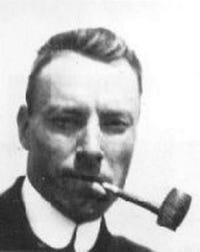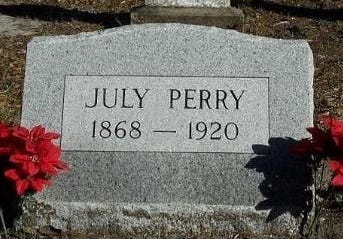Amerikan Melanin
Veteran
I drove thru this shytty ass town. I told yall I was feeling disturbed down there. I was picking up the energy of all the lynched and assaulted ancestors. They stole so much land from us its crazy.
I was reading another story about how black farmers were cheated or run off acres that when put together would be about equal to the size of WEST VIRGINIA!! Thats wealth and resources right there stolen.
Anyway Ocoee:
Ocoee On Fire: The 1920 Election Day Massacre
A quiet Florida citrus town became the scene of a gruesome racial cleansing that purged the entire black population for over 60 years.
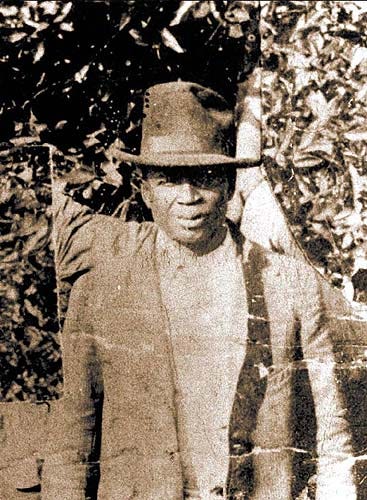
July Perry
It seemed like a lifetime ago since Julius Perry — better known as “July” to pretty much everyone in western Orange County — first arrived in Ocoee. Thirty years prior the teenager hopped off the mule-drawn wagon after the multi-day trip from Travelers Rest, South Carolina. He was overflowing with enthusiasm about the opportunities post-Reconstruction era Florida would bring.
He and his traveling companions, Mose Norman and Valentine Hightower, walked through the small but bustling downtown of the 1880s village and set their eyes on the pine tree-lined Starke Lake for the first time. They had little but their dreams and a strong work ethic.
Though the shadows of the Confederacy still lingered in Central Florida long into the 1900s, Ocoee was becoming the model for a post-slavery economically integrated Southern town.
The next three decades went well for the Palmetto State transplants. Very well in fact. With a thriving black middle class beginning to emerge in Ocoee, these three friends were perhaps its most prosperous sons. By then each were owners of multiple large tracts of farmland on the north side of town and had attained a wealth and status coveted even by local whites.
To be sure, despite the relative tranquility and economic cooperation, there was still a prevalent undercurrent of racism in Southern society. In the cities and towns across Florida, distinct geographic lines had been drawn between the black and white communities. Having business dealings with the “inferior race” was one thing, but having social and religious cross-over was still many decades away.
Ocoee was founded in the 1850s along the western banks of the pristine Starke Lake, as a camp for laborers working the farms around southern shores of Lake Apopka. A village soon grew up around the camp and became what is now the downtown historic district.
By 1920 there were just over 1,000 residents of the unincorporated town. Almost half of them were black. In fact, the African-American population grew so large that two distinct black communities developed, sandwiching the white-dominated downtown district.
The southern black community — known locally as the Baptist Quarters — sprung up around the Friendship Baptist Church, an unpainted wood-framed church founded in 1896. The neighborhood was located just south of the intersection of Orlando Avenue and Bluford Avenue.
Cutting through the heart of downtown, Bluford Avenue is the main north-south artery through Ocoee. It was once part of Route 22, the snaking highway connecting Winter Garden to Orlando. In the years before Highway 50 made it a straight shot, it took about an hour by car to arrive in downtown Orlando from Ocoee.
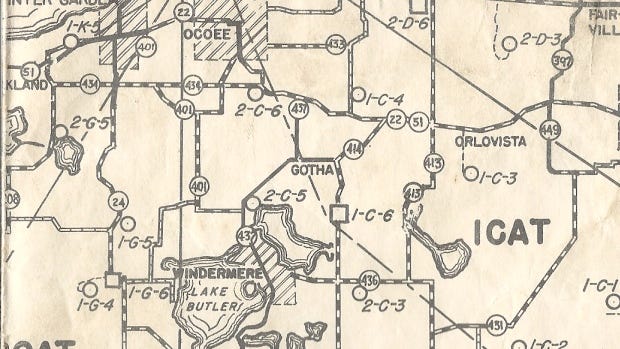
Road map of western Orange County from around 1920.
Heading northward on Bluford from downtown and crossing the railroad tracks you find the northern black community, commonly known as the Methodist Quarters. Its namesake Ocoee African Methodist Episcopal Church held its first services in 1890.
The church itself was likely located near what is now the City of Ocoee Central Park sports complex. Off of the nearby cul de sac on Anderson Place there is a one-acre lot that was only recently memorialized as the former African-American cemetery. The graveyard lacks any surviving tombstones, but was the likely location of the original AME Church.
It was the northern Methodist Quarters, the older of the two neighborhoods, where the three amigos built their homesteads. They were next-door neighbors even, all settling along what is now Apopka-Ocoee Road.
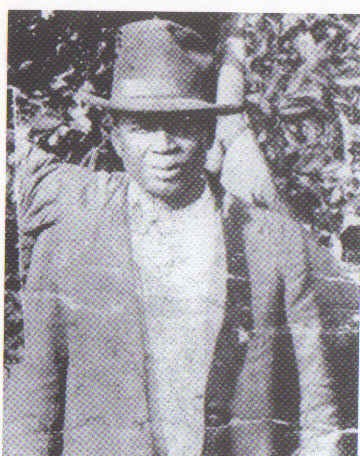
Julius “July” Perry
July Perry had become the well-respected godfather of the black community. He served as a deacon in the church and the local labor leader or “straw boss.” It was said that anyone seeking to employ black laborers needed to speak with him first. He was an admired, brave, and rational thinker. A sort of civil rights leader before there was a civil rights movement, he encouraged young blacks to be educated and stand up for themselves as first-class citizens.
Perry’s wife (Estelle), his three sons and daughter (Coretha Perry Caldwell) lived on a large estate that included their home and several barns and outbuildings. They regularly opened their doors to anyone in need. If anyone was in trouble, they knew they could find advice and sanctuary in the Perry home.
Meanwhile, 59-year-old Mose Norman and wife Elisa liked to live a little more lavishly, enjoying the fruits of the years of hard work farming the 100-acre family orange grove. He drove around the brick-paved streets of downtown proudly sporting a fancy six-cylinder Columbia convertible with white sidewall tires, silver spokes, and elegant “storm curtains” instead of side windows.
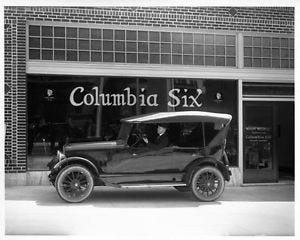
Example of the Columbia Six convertible that Mose Norman drove.
Mose was definitely a well-known and prosperous man about town! It was said that he was once offered $10,000 for his groves — a huge sum for the time — but refused to take it.
Unlike his two friends, Valentine Hightower had a much more low-key personality. He knew well the dangers “negroes” opened up for themselves when they got too “uppity” in the still very white supremacist society of the time. He and his wife Jane lived a modest lifestyle and raised their kids to mainly keep to themselves. They answered politely when spoken to and prefered not to draw too much attention to themselves.
‘’My father was kind of humble,’’ Hightower’s son Armstrong recalled many decades later, ‘’He didn’t take no chances on nothing.’’
As the summer of 1920 rolled around, July was still feeling that same kind of optimism about the future that he had when he first arrived. And for good reason! Business was booming, his orange and cucumber harvests were bigger than ever, and the upcoming November election had everyone in the black community hopeful that they might see the first-ever Republican elected to the Florida senate.
Opposite of today’s party paradigm, the political arena in the South of the early 20th Century was dominated by white Democrats — sometimes known as “Dixiecrats”. Conversely, the states north of the Mason-Dixon Line were Republican strongholds. Blacks, if involved in politics at all, were almost exclusively Republican.
Fueled largely by an influx of northerners moving to the Florida frontier, the Republican party’s influence slowly began to creep into the Deep South. They brought with them winds of an early stage civil rights movement. Whether by sincere concern for the African-American plight or mere political opportunism, these Republicans sought to work with the black population to empower them and more importantly register them to vote!
Though blacks were granted the right to vote under the 15th Amendment to the Constitution in 1870, most did not exercise the freedom for decades. Reasons for this vary from intimidation to indifference to voter suppression techniques, such as the poll tax.
After slavery was abolished at the end of the Civil War, the northerners instituted an era of Reconstruction that was resented by white citizens of the South. To them it was a punishment and power-grab being handed down by the yankees. They abhorred the changes to their way of life and held ill-will toward the northern “carpetbaggers” who sought to impose it.
In the decades that followed, the continued the subjugation of the black population was codified by Jim Crow laws, segregation, spoken or unspoken cultural rules, and even Ku Klux Klan sponsored intimidation and violence.
Far from an undercover secret society of extremists, at the time the Klan was a major political and cultural force in the region. What is now Orange and Lake Counties were among the strongest footholds the KKK had in the state of Florida. The Klan held rallies and met regularly to show their force. It is said that, at the time, 90% of the “law enforcement officers, judges, public servants and lawyers” in Winter Garden and Ocoee were members of the hooded order.
For the first time in the 1920 elections women would also have the right to vote — including black women. Throughout the South the Republicans worked with prominent local black leaders on voter registration drives within their communities. They spread the word, signed people up (in some cases paying the poll tax for those who could not afford it), and encouraged them to turn out on Election Day.
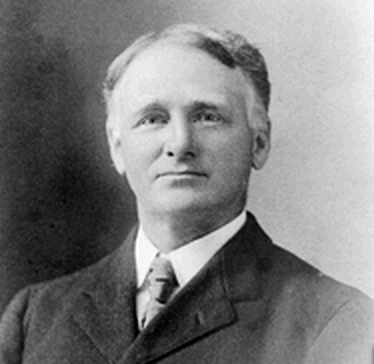
Judge John M. Cheney
John Moses Cheney, for whom the eastern part of modern-day Highway 50 has been dubbed “Cheney Highway,” was a powerful white Republican. The former judge was a major contributor to the get-out-the-vote campaign around Orange County.
These voter registration efforts intensified approaching the 1920 elections. Cheney, the wealthy owner of Orlando Power and Light, was also an aspiring politician who was running for senate. He would need a major helping hand from black voters if his campaign were to have any hope; his numerous previous congressional and gubernatorial campaigns since 1900 had all fallen well flat.
What is old becomes new again: newspapers (the dominant form of media at the time) played a major role in firing up the conservative Democratic base. Great fear and uncertainty was sparked in whites around the state by inflammatory headlines of how the negro population would soon take over and democracy be overrun by servants and cooks. This exacerbated the angst of many local whites and especially the Klan, who sought to maintain both white and Democratic dominance in state and local politics. Blacks, they felt, were beginning to reach above their station and needed to be cut back down.
Regardless, the voter registration movement continued. In the weeks leading up to the 1920 election, the Klan sent threatening letters to Cheney, fellow attorney William O’Neal, and other Republican leaders. They ordered them to stop the voter registration campaign or face the consequences. With the warnings ignored, the Klan was only further enraged.
The KKK held rallies in the streets of cities like Orlando, Daytona, Miami, and Jacksonville. In complete white hoods and regalia they marched in attempts to show strength and scare off any blacks who would dare cast a ballot. Reports say the Orlando rally was at least 500 strong.
On November 1st, the day before the election, with robes and crosses, the Klan paraded through the streets of the two black communities in Ocoee late into the night. With megaphones they warned that “not a single Negro will be permitted to vote” and if any of them dared to do so there would be dire consequences.
Election Day came and at least some blacks did attempt to vote in Orange County; however, none were permitted to enter their respective polling places. White enforcers camped out around the centers and poll workers were given instructions to deflect their attempts.
One-by-one would-be black voters were turned away either by threats of violence or by poll workers who found their names “mysteriously” absent from the voter registration rolls. Pollsters instructed them to get documentation from notary public R. C. Biegelow to verify that they were indeed registered to vote. Conveniently, however, Biegelow was unable to be located because he was out on a fishing trip that day.
With little other option, most returned to their homes without casting their ballots. Mose Norman would not be so easily deterred. After being turned away that morning in his Ocoee precinct, he rode to Orlando to seek the council of Judge Cheney. The attorney instructed him to write down the names of any African-Americans who were not permitted to vote and also the names of the poll workers who had denied their Constitutional right. Cheney said a lawsuit against the County could be brought to contest this violation.
Norman returned to Ocoee with these instructions, along with a handful of black citizens again seeking to vote; as you can imagine, things did not go well. After again being forcibly turned away, he demanded the poll workers names and exclaimed: “We will vote, by God!” At that time Norman was revealed to have a loaded shotgun (either on his person or in his car) and an altercation ensued. Overpowered and beaten by the butt of his own gun, he escaped with the scene with help from friends (possibly Reverend Edward Franks).
As Norman fled, the now inflamed group of whites — largely Klansmen — convened about what to do about the situation. They determined that they had to bring Mose Norman to justice and set an example for any other blacks who dared threaten their white Democratic monopoly on local authority.
Outraged yet fearful, Norman visited the home of his good friend July Perry on Apopka-Ocoee Road. The battered farmer showed Perry a note he had from Cheney about their legal rights and recounted what happened that day. There was a tense urgency as the two sensed something terrible was about to go down.
By that time it was early afternoon, the increasingly angry white mob headed toward the home of Mose Norman but were tipped off that he was hiding out at the home of July Perry. The “justice seekers” surrounded Perry’s home, from which Norman had long since left.
I was reading another story about how black farmers were cheated or run off acres that when put together would be about equal to the size of WEST VIRGINIA!! Thats wealth and resources right there stolen.
Anyway Ocoee:
Ocoee On Fire: The 1920 Election Day Massacre
A quiet Florida citrus town became the scene of a gruesome racial cleansing that purged the entire black population for over 60 years.

July Perry
It seemed like a lifetime ago since Julius Perry — better known as “July” to pretty much everyone in western Orange County — first arrived in Ocoee. Thirty years prior the teenager hopped off the mule-drawn wagon after the multi-day trip from Travelers Rest, South Carolina. He was overflowing with enthusiasm about the opportunities post-Reconstruction era Florida would bring.
He and his traveling companions, Mose Norman and Valentine Hightower, walked through the small but bustling downtown of the 1880s village and set their eyes on the pine tree-lined Starke Lake for the first time. They had little but their dreams and a strong work ethic.
Though the shadows of the Confederacy still lingered in Central Florida long into the 1900s, Ocoee was becoming the model for a post-slavery economically integrated Southern town.
The next three decades went well for the Palmetto State transplants. Very well in fact. With a thriving black middle class beginning to emerge in Ocoee, these three friends were perhaps its most prosperous sons. By then each were owners of multiple large tracts of farmland on the north side of town and had attained a wealth and status coveted even by local whites.
To be sure, despite the relative tranquility and economic cooperation, there was still a prevalent undercurrent of racism in Southern society. In the cities and towns across Florida, distinct geographic lines had been drawn between the black and white communities. Having business dealings with the “inferior race” was one thing, but having social and religious cross-over was still many decades away.
Ocoee was founded in the 1850s along the western banks of the pristine Starke Lake, as a camp for laborers working the farms around southern shores of Lake Apopka. A village soon grew up around the camp and became what is now the downtown historic district.
By 1920 there were just over 1,000 residents of the unincorporated town. Almost half of them were black. In fact, the African-American population grew so large that two distinct black communities developed, sandwiching the white-dominated downtown district.
The southern black community — known locally as the Baptist Quarters — sprung up around the Friendship Baptist Church, an unpainted wood-framed church founded in 1896. The neighborhood was located just south of the intersection of Orlando Avenue and Bluford Avenue.
Cutting through the heart of downtown, Bluford Avenue is the main north-south artery through Ocoee. It was once part of Route 22, the snaking highway connecting Winter Garden to Orlando. In the years before Highway 50 made it a straight shot, it took about an hour by car to arrive in downtown Orlando from Ocoee.

Road map of western Orange County from around 1920.
Heading northward on Bluford from downtown and crossing the railroad tracks you find the northern black community, commonly known as the Methodist Quarters. Its namesake Ocoee African Methodist Episcopal Church held its first services in 1890.
The church itself was likely located near what is now the City of Ocoee Central Park sports complex. Off of the nearby cul de sac on Anderson Place there is a one-acre lot that was only recently memorialized as the former African-American cemetery. The graveyard lacks any surviving tombstones, but was the likely location of the original AME Church.
It was the northern Methodist Quarters, the older of the two neighborhoods, where the three amigos built their homesteads. They were next-door neighbors even, all settling along what is now Apopka-Ocoee Road.

Julius “July” Perry
July Perry had become the well-respected godfather of the black community. He served as a deacon in the church and the local labor leader or “straw boss.” It was said that anyone seeking to employ black laborers needed to speak with him first. He was an admired, brave, and rational thinker. A sort of civil rights leader before there was a civil rights movement, he encouraged young blacks to be educated and stand up for themselves as first-class citizens.
Perry’s wife (Estelle), his three sons and daughter (Coretha Perry Caldwell) lived on a large estate that included their home and several barns and outbuildings. They regularly opened their doors to anyone in need. If anyone was in trouble, they knew they could find advice and sanctuary in the Perry home.
Meanwhile, 59-year-old Mose Norman and wife Elisa liked to live a little more lavishly, enjoying the fruits of the years of hard work farming the 100-acre family orange grove. He drove around the brick-paved streets of downtown proudly sporting a fancy six-cylinder Columbia convertible with white sidewall tires, silver spokes, and elegant “storm curtains” instead of side windows.

Example of the Columbia Six convertible that Mose Norman drove.
Mose was definitely a well-known and prosperous man about town! It was said that he was once offered $10,000 for his groves — a huge sum for the time — but refused to take it.
Unlike his two friends, Valentine Hightower had a much more low-key personality. He knew well the dangers “negroes” opened up for themselves when they got too “uppity” in the still very white supremacist society of the time. He and his wife Jane lived a modest lifestyle and raised their kids to mainly keep to themselves. They answered politely when spoken to and prefered not to draw too much attention to themselves.
‘’My father was kind of humble,’’ Hightower’s son Armstrong recalled many decades later, ‘’He didn’t take no chances on nothing.’’
As the summer of 1920 rolled around, July was still feeling that same kind of optimism about the future that he had when he first arrived. And for good reason! Business was booming, his orange and cucumber harvests were bigger than ever, and the upcoming November election had everyone in the black community hopeful that they might see the first-ever Republican elected to the Florida senate.
Opposite of today’s party paradigm, the political arena in the South of the early 20th Century was dominated by white Democrats — sometimes known as “Dixiecrats”. Conversely, the states north of the Mason-Dixon Line were Republican strongholds. Blacks, if involved in politics at all, were almost exclusively Republican.
Fueled largely by an influx of northerners moving to the Florida frontier, the Republican party’s influence slowly began to creep into the Deep South. They brought with them winds of an early stage civil rights movement. Whether by sincere concern for the African-American plight or mere political opportunism, these Republicans sought to work with the black population to empower them and more importantly register them to vote!
Though blacks were granted the right to vote under the 15th Amendment to the Constitution in 1870, most did not exercise the freedom for decades. Reasons for this vary from intimidation to indifference to voter suppression techniques, such as the poll tax.
After slavery was abolished at the end of the Civil War, the northerners instituted an era of Reconstruction that was resented by white citizens of the South. To them it was a punishment and power-grab being handed down by the yankees. They abhorred the changes to their way of life and held ill-will toward the northern “carpetbaggers” who sought to impose it.
In the decades that followed, the continued the subjugation of the black population was codified by Jim Crow laws, segregation, spoken or unspoken cultural rules, and even Ku Klux Klan sponsored intimidation and violence.
Far from an undercover secret society of extremists, at the time the Klan was a major political and cultural force in the region. What is now Orange and Lake Counties were among the strongest footholds the KKK had in the state of Florida. The Klan held rallies and met regularly to show their force. It is said that, at the time, 90% of the “law enforcement officers, judges, public servants and lawyers” in Winter Garden and Ocoee were members of the hooded order.
For the first time in the 1920 elections women would also have the right to vote — including black women. Throughout the South the Republicans worked with prominent local black leaders on voter registration drives within their communities. They spread the word, signed people up (in some cases paying the poll tax for those who could not afford it), and encouraged them to turn out on Election Day.

Judge John M. Cheney
John Moses Cheney, for whom the eastern part of modern-day Highway 50 has been dubbed “Cheney Highway,” was a powerful white Republican. The former judge was a major contributor to the get-out-the-vote campaign around Orange County.
These voter registration efforts intensified approaching the 1920 elections. Cheney, the wealthy owner of Orlando Power and Light, was also an aspiring politician who was running for senate. He would need a major helping hand from black voters if his campaign were to have any hope; his numerous previous congressional and gubernatorial campaigns since 1900 had all fallen well flat.
What is old becomes new again: newspapers (the dominant form of media at the time) played a major role in firing up the conservative Democratic base. Great fear and uncertainty was sparked in whites around the state by inflammatory headlines of how the negro population would soon take over and democracy be overrun by servants and cooks. This exacerbated the angst of many local whites and especially the Klan, who sought to maintain both white and Democratic dominance in state and local politics. Blacks, they felt, were beginning to reach above their station and needed to be cut back down.
Regardless, the voter registration movement continued. In the weeks leading up to the 1920 election, the Klan sent threatening letters to Cheney, fellow attorney William O’Neal, and other Republican leaders. They ordered them to stop the voter registration campaign or face the consequences. With the warnings ignored, the Klan was only further enraged.
The KKK held rallies in the streets of cities like Orlando, Daytona, Miami, and Jacksonville. In complete white hoods and regalia they marched in attempts to show strength and scare off any blacks who would dare cast a ballot. Reports say the Orlando rally was at least 500 strong.
On November 1st, the day before the election, with robes and crosses, the Klan paraded through the streets of the two black communities in Ocoee late into the night. With megaphones they warned that “not a single Negro will be permitted to vote” and if any of them dared to do so there would be dire consequences.
Election Day came and at least some blacks did attempt to vote in Orange County; however, none were permitted to enter their respective polling places. White enforcers camped out around the centers and poll workers were given instructions to deflect their attempts.
One-by-one would-be black voters were turned away either by threats of violence or by poll workers who found their names “mysteriously” absent from the voter registration rolls. Pollsters instructed them to get documentation from notary public R. C. Biegelow to verify that they were indeed registered to vote. Conveniently, however, Biegelow was unable to be located because he was out on a fishing trip that day.
With little other option, most returned to their homes without casting their ballots. Mose Norman would not be so easily deterred. After being turned away that morning in his Ocoee precinct, he rode to Orlando to seek the council of Judge Cheney. The attorney instructed him to write down the names of any African-Americans who were not permitted to vote and also the names of the poll workers who had denied their Constitutional right. Cheney said a lawsuit against the County could be brought to contest this violation.
Norman returned to Ocoee with these instructions, along with a handful of black citizens again seeking to vote; as you can imagine, things did not go well. After again being forcibly turned away, he demanded the poll workers names and exclaimed: “We will vote, by God!” At that time Norman was revealed to have a loaded shotgun (either on his person or in his car) and an altercation ensued. Overpowered and beaten by the butt of his own gun, he escaped with the scene with help from friends (possibly Reverend Edward Franks).
As Norman fled, the now inflamed group of whites — largely Klansmen — convened about what to do about the situation. They determined that they had to bring Mose Norman to justice and set an example for any other blacks who dared threaten their white Democratic monopoly on local authority.
Outraged yet fearful, Norman visited the home of his good friend July Perry on Apopka-Ocoee Road. The battered farmer showed Perry a note he had from Cheney about their legal rights and recounted what happened that day. There was a tense urgency as the two sensed something terrible was about to go down.
By that time it was early afternoon, the increasingly angry white mob headed toward the home of Mose Norman but were tipped off that he was hiding out at the home of July Perry. The “justice seekers” surrounded Perry’s home, from which Norman had long since left.
